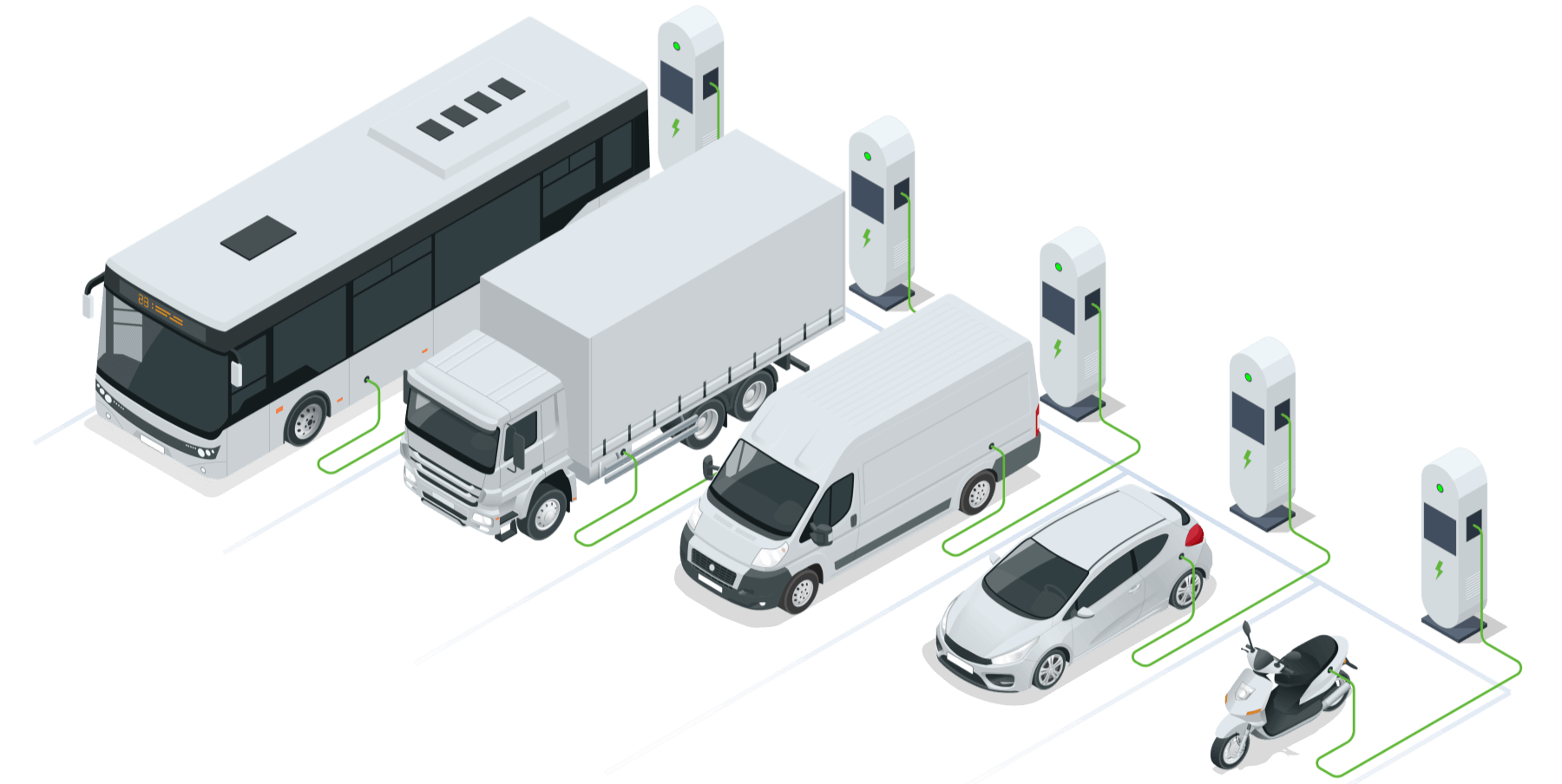The EV industry in Norway – Industry News 2306

Preface
EV industry in Norway
The EV industry in Norway is thriving, with electric vehicles accounting for nearly 90% of the market. Without a doubt, Norway has become the country with the highest proportion of electric vehicles in the world. How did Norway accomplish this feat?

Analysis Of EV Industry In Norway
Data Aresentation
With a population of approximately 5.5 million, Norway has over 4.5 million registered vehicles, and electric cars constitute a significant portion, earning it the title of ‘Electric Car Kingdom.’ In 2022, Norway sold a total of 138,000 pure electric cars, capturing a market share of 79.3%, surpassing the previous year’s figure of 64.5% by a large margin. When including plug-in hybrid vehicles, the penetration rate for electric cars in Norway reached an impressive 87.8% in 2022. Due to the absence of domestic electric car brands and fair competition environment along with exemption from import taxes on electric vehicles, Norway has become the first choice for many foreign car manufacturers entering the European market.
According to the latest data from the Norwegian Road Federation (OFV), Norway registered 19,400 new cars in March this year, with pure electric vehicles accounting for an impressive 85% of the total. The top three best-selling models were the Tesla Model Y, Toyota bZ4X, and Volkswagen ID.3.
In the first quarter of this year, the Tesla Model Y became the best-selling car in Norway with sales reaching 6,911 units. It is worth mentioning that Tesla’s sales in Norway saw a significant increase in March, largely attributed to its price reduction. The price cut for the Tesla Model Y alone amounted to 120,000 Norwegian Kroner (approximately RMB 0.64 per Norwegian Kroner).
Currently, most of the leading new energy vehicle brands in Norway are from Europe and America; however, Chinese brands are experiencing rapid growth in the market.
Due to the significant price advantage resulting from tax policies, Norwegian consumers have been increasingly opting for electric vehicles, thus reshaping the automotive market in Norway.
Environmental Analysis
Although Norway is close to the Arctic Circle, most of its regions have a temperate maritime climate. Summers are cool and humid, while winters are mild and snowy. This climate has little impact on the performance of electric vehicle batteries, allowing car owners to use them without worry. Due to its relatively small land area and shorter driving distances, coupled with convenient charging infrastructure, Norwegian electric vehicle owners generally do not experience ‘range anxiety’.
Norway, being a global environmental pioneer, naturally embraces new energy vehicles primarily due to its geographical location and natural environment. Situated near the Arctic Circle with three sides surrounded by seas, Norway is greatly affected by global warming, leading successive governments to place significant emphasis on environmental protection.
Market Background
The Norwegian government has announced its ambition to become the first country in the world to stop selling gasoline and diesel cars by 2025. This goal is even more ambitious than the UK’s plan for 2030 and France’s plan for 2040, which aims to “ban combustion engines”. However, Norway’s commitment is not an empty promise, as the country has consistently broken historical records in terms of electric vehicle penetration.
Since surpassing a market share of 30% in 2018, it has continued to grow at an average annual rate of over 10 percentage points. By 2022, Norway achieved an electric vehicle penetration rate of 87.8%, setting new records both domestically and globally.
According to recent data from CleanTechnica, electric vehicles accounted for a remarkable 91.1% of all passenger cars sold in Norway in April, representing an impressive growth of 84.2% compared to the same period last year.
Currently, 98% of Norway’s electricity comes from renewable energy sources, primarily hydropower and wind power. The abundant green electricity guarantees the electrification of vehicles. Additionally, since the discovery of oil and gas in the 1970s, Norway has accumulated significant wealth through exporting these resources, laying a solid foundation for national and individual electrification efforts. Furthermore, with a high level of education, the concept of environmental protection deeply resonates with the people.
EV Charging
Meanwhile, the Norwegian government places great emphasis on the development of charging infrastructure. Despite its small land area, Norway already boasts 1,500 supercharging stations and over 8,000 regular public charging stations. With more than 35 chargers per ten thousand people, this number far exceeds that of Germany, which had the highest new energy vehicle sales in Europe last year.
In addition to the convenience of installing home charging stations, Norway’s public charging infrastructure is also extremely well-developed. Shopping centers, supermarkets, gas stations, and even fast food restaurants like McDonald’s are equipped with charging stations, making it incredibly convenient for electric vehicle owners to charge their vehicles.
Norwegian Model
Norway has emerged as a global leader in the electric vehicle market primarily due to its government’s robust incentive policies for electric car development. The “Norwegian model” has been instrumental in driving the rapid growth of the country’s electric vehicle market. Since the 1990s, successive Norwegian governments have gradually implemented subsidies and benefits for electric cars, ensuring these measures are long-lasting and comprehensive in their scope.
In terms of tax exemptions, Norway has been exempting pure electric vehicles from import and purchase taxes since 1990. From 1996 to 2021, annual road taxes were also waived for these vehicles. Additionally, from 2000 to 2018, company car taxes were halved for electric vehicles, and starting from 2001, a 25% reduction in value-added tax was implemented. In 2015, a further reduction of 25% in leasing value-added tax was introduced.
In terms of road rights and fee reductions, electric vehicles are not subject to tolls on highways or ferries. They also enjoy free parking or reduced fees in municipal parking lots. For example, for a sedan with a factory price of NOK400,000 (Norwegian Krone), the total taxes and fees paid by a conventional fuel vehicle amount to approximately NOK210,000 including scrapping fees, weight fees, carbon dioxide tax nitrogen oxide tax and value-added tax. As a result, the final selling price would be NOK610,000. On the other hand,electric vehicles only incur scrapping fees which amount to NOK2,400。Therefore,the final price is only about half that of conventional fuel cars.
Furthermore,in Norway,electric vehicle owners are allowed to use bus lanes during peak commuting hours. However,as electric vehicles have become mainstream ,Norway’s policies towards them are continuously being adjusted.
Policy Change
Starting from 2023, Norway will introduce two new taxes on pure electric vehicles. One is a weight tax of 12.5 Norwegian Kroner per kilogram for vehicles weighing over 500 kilograms. The other is a value-added tax of 25% on the portion of the price of pure electric vehicles exceeding 500,000 Norwegian Kroner. Previously, the Norwegian government planned to significantly tighten the favorable policies regarding tolls and parking fees for electric cars and gradually eliminate privileges related to road access.
From January 1st, 2023, a relatively light pure electric vehicle weighing around 1700 kilograms will incur an additional cost of 15,000 Norwegian Kroner. For a heavier pure electric vehicle weighing around 2700 kilograms, the extra cost will increase to 27,500 Norwegian Kroner. According to the new value-added tax policy, most models among Norway’s top-selling ten electric cars are priced above this threshold.
For example, Tesla Model Y Performance version with a price tag of NOK600k would be subject to paying a value-added tax of NOK100k (25% on the amount exceeding the threshold), which amounts to NOK25k; as for Mercedes EQC and other pure electric vehicles priced at approximately NOK700k, they would face an added value-added tax expense of NOK50k.
Starting this year along with these new weight and value-added taxes in place, Tesla Model Y Performance version would see an increase in costs by approximately €1850 due to weight tax and €2350 due to value-added tax.
The Norwegian Ministry of Finance has stated that while the previous tax exemption policy has helped boost electric vehicle sales and reduce emissions, it has resulted in a loss of 39.4 billion Norwegian kroner in fiscal revenue for Norway by 2022. Due to the already significant market share of electric vehicles, the Norwegian government is seeking to adjust its policies primarily by reducing value-added tax benefits for high-end electric vehicles.
The State Secretary of the Norwegian Ministry of Transport, Mr. Vasara, stated that reintroducing a partial value-added tax on high-end electric car models would not significantly impact the overall electric car market in Norway. This is because electric cars have already become a normalized means of transportation for Norwegians, and he has great confidence in the continued positive development trend of the Norwegian electric car market. Therefore, it can be seen that as electric cars gradually gain more popularity, the ‘Norwegian model’ is also constantly evolving.


0 Comments